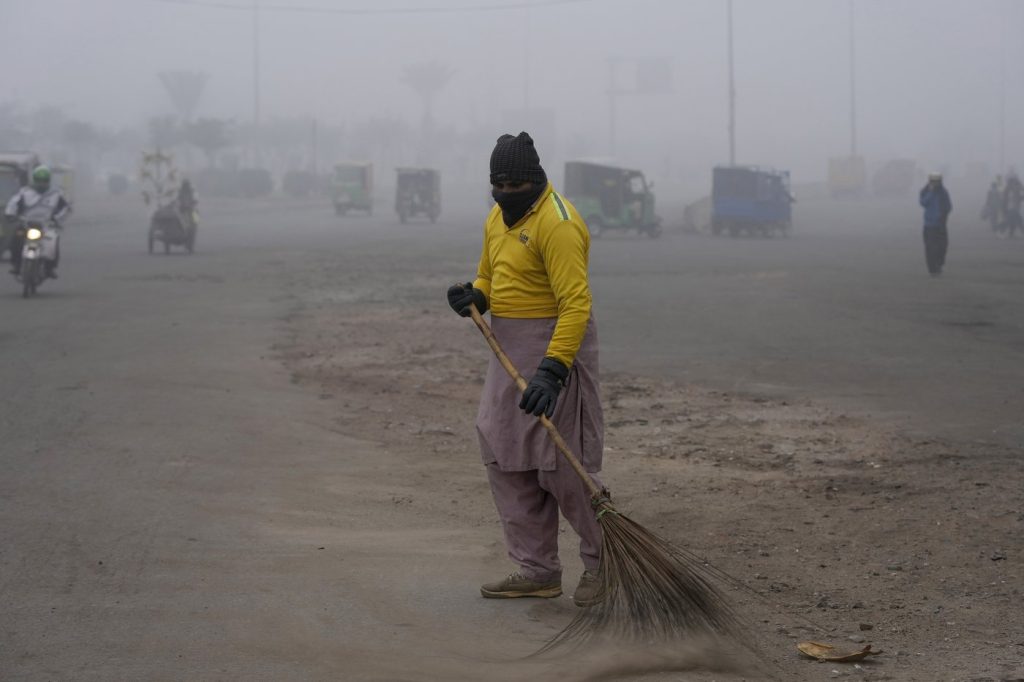BENGALURU, India (AP) A recent report by Switzerland-based air quality monitoring database IQAir highlights a concerning global air pollution crisis, revealing that only 17% of cities worldwide meet the established air pollution guidelines. Data was analyzed from 40,000 air quality monitoring stations across 138 countries, identifying Chad, Congo, Bangladesh, Pakistan, and India as having the most polluted air, with India notably housing six of the nine most contaminated cities. The industrial town of Byrnihat in northeastern India emerged as the most polluted city globally.
Experts caution that the actual levels of air pollution could be significantly higher, especially in regions lacking sufficient monitoring infrastructure. For instance, in Africa, there is only one air quality monitoring station for every 3.7 million residents, indicating a serious gap in data collection and public health information.
In response to the air pollution challenge, efforts to increase the number of air quality monitors are underway. This year alone, the report incorporated data from 8,954 new locations, alongside approximately a thousand new monitoring devices, representing progress in the initiative to comprehensively track air pollution levels.
However, a setback occurred when the U.S. State Department announced that it would no longer publish air quality data from its embassies and consulates globally, raising concerns among environmental analysts about the potential impact on monitoring transparency and public awareness.
According to Fatimah Ahamad, chief scientist and air pollution expert at the Sunway Centre for Planetary Health in Malaysia, prolonged exposure to polluted air can lead to severe health issues, including respiratory illnesses, Alzheimer’s disease, and various forms of cancer. The World Health Organization (WHO) estimates that around 7 million deaths annually are attributed to air pollution. Ahamad emphasizes the urgent need for intensified efforts to reduce air pollution levels, stating that 99% of the global population inhabits regions that do not meet recommended air quality standards.
Ahamad draws a stark comparison between air and water scarcity: "If you have bad water, no water, you can tell people to wait for half an hour a day; the water will come. But if you have bad air, you cannot tell people to pause breathing," she remarked, underscoring the critical nature of air quality for public health.
Countries like Beijing, Seoul (South Korea), and Rybnik (Poland) have successfully enhanced their air quality by implementing stringent regulations on pollution stemming from vehicles, power plants, and industrial activities. Furthermore, these cities have promoted cleaner energy sources and invested in efficient public transportation systems as part of their strategy to combat air pollution.
Another significant regional endeavor to mitigate severe air pollution is through the Association of Southeast Asian Nations (ASEAN) agreement on transboundary haze pollution. Although progress has been limited, ten countries in the region have made commitments to collaborate on monitoring and controlling pollution originating from large forest fires, which are prevalent during dry seasons.
Shweta Narayan, a campaign lead at the Global Climate and Health Alliance, pointed out that many areas facing the worst air pollution also correspond with high levels of greenhouse gas emissions caused by the burning of fossil fuels such as coal, oil, and gas. She advocates for reducing emissions to not only address climate change but also to improve air quality simultaneously, stating that the air pollution crisis and climate change are "two sides of the same coin."










